Guest post by Bonnie Teece
Bonnie is an astrobiologist and PhD candidate at UNSW Sydney. Her publishing record includes research on how organic material preserved in hot springs might help us search for organics on Mars and how the same types of techniques aboard Perseverance can be applied to help find ancient life. Bonnie is currently working as part of Praxical, a team putting together free virtual workshops for National Science Week in August 2020, including a workshop on Exploring Habitable Worlds. These workshops are hands-on and get participants to work with real data and tools that scientists use. Bonnie spends a lot of time doing science outreach, and often tweets about it. You can find her at @Astrobonology
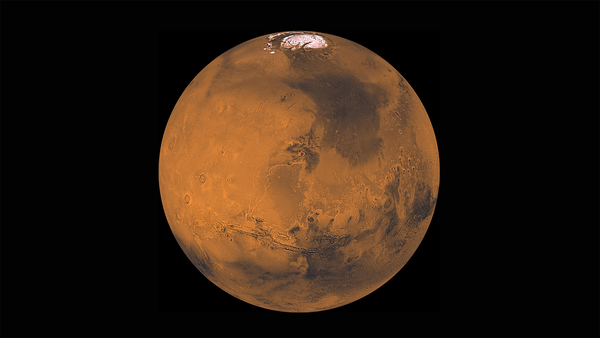
In 2018, NASA lost contact with the Opportunity rover after a dust-storm. Desperate to wake her, the engineers played her songs daily, to no avail. Humans have also become fascinated with the (sadly exaggerated) idea that Curiosity sings happy birthday to herself far from home. These stories illustrate how the Mars rovers capture hope and become human to us. We see the rovers as feeling, ready to carry on if only we can reach them because, for us, they represent the new generation of explorers. And humanity has always romanticised our explorers.
Perseverance
Soon our newest rover, Perseverance, will leave home to set out and explore an ancient Martian lake bed. Aptly named, Perseverance has a mission time of at least one Mars year, but the rovers typically outlast their missions. Curiosity is still exploring after four Mars years (8 Earth years) although her original mission was planned for one. Opportunity’s planned mission time was 90 Mars solar days, but instead, she persisted for eight Mars years. Alex Mather, an American high school student, won a competition to name Perseverance. A name that was chosen because Perseverance is already imbued with the hopes of humans. Her name captures the spirit of exploration. The hope to strike out, to find something new, to connect us with the universe. And just how will she do that?
Perseverance has four science goals for Mars exploration (shown below). The two goals I would like to discuss are 1) determining whether life ever arose on Mars, and 2) characterising the geology of Mars. These two goals are intertwined; to find any sort of believable life on Mars, we need to understand the context. We understand this context by looking at rock types that are present on Mars. These rocks can tell us about the environment they were originally deposited in (e.g. lake/volcano/hot spring), what age they are, and how steep they are (whether the rovers can actually investigate them).
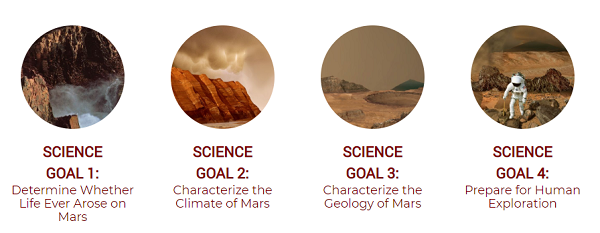
Looking for life on Mars
Astrobiology refers to a field of science that seeks to understand life in the universe – how it arose, its distribution, its past and future. Scientists know that early in Martian history, Mars was warm and wet, and not dissimilar to Earth. Many astrobiologists believe that our best chance of finding life on the red planet is to search in these ancient rocks. A challenge of Mars exploration is to find the right age rocks where there is also evidence of past water. Following the water is crucial to the mission because life on Earth (the only life we know of) requires water.
Perseverance is going to explore an ancient lake-bed on Mars called Jezero Crater. Jezero was chosen for a variety of reasons, including having rocks that are likely to be the right age and evidence of past water. Low energy lake-beds are excellent places to look for life because they stratify (separate into layers) and have anoxic bottoms, increasing preservation potential.
How does Perseverance probe rocks for signs of life?
Perseverance is equipped with a payload of instruments. Some that are dedicated to help narrow down the best places to search for life. Mars is a big place for a little rover, and she can’t look at every rock she passes. So Perseverance will use a combination of instruments to canvas for rock packages which are more likely to hold life. She has cameras – Mastcam-Z helping her see in detail from far away; and Supercam which can ‘see’ organic compounds from a distance. She has PIXL, a spectrometer which produces false colour elemental maps, measuring the chemical composition of rocks in a very fine-scale resolution. And, lastly (in terms of astrobiology) SHERLOC, an instrument which searches for organic compounds in high resolution. These instruments work together to build up a body of evidence to show scientists where they should look for life.
Bringing signs of life home
Perseverance is a special rover. She’s going to do something that no rover has ever done before. She will collect samples from Mars to return to Earth. As Perseverance explores Mars, she will cache exceptional samples in special sample tubes. During her mission, she will leave them somewhere safe for potential return to Earth sometime in the future. This sample return is an exhilarating prospect. As advanced as the rovers are, there are still some things that we can’t get them to do remotely. Bringing the samples home will allow us to get so much more information.
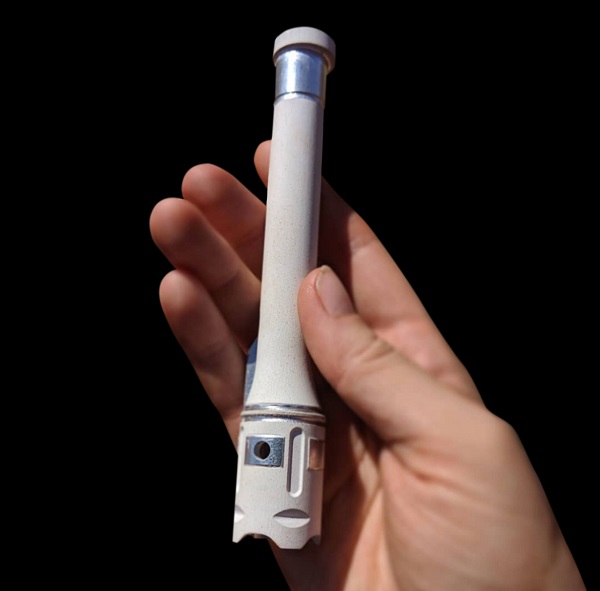
Astrobiology and ancient life in Australia
Australia is a major player in the international astrobiology and planetary science community. My PhD research looks at ancient fossils on Earth, from the same time period that Mars might have hosted life. These rocks come from the Pilbara Craton in WA, a dry, dusty place, recording the oldest life on Earth. These rocks are so astrobiologically significant that scientists from Perseverance’s mission team came out to see them last year. Their mission: To learn how to look for life on Mars. I was privileged enough to get to go out there with them. My supervisor Professor Martin Van Kranendonk led them through these rock packages, drawing on his experience at putting together the earliest pieces of the puzzle of life on Earth.
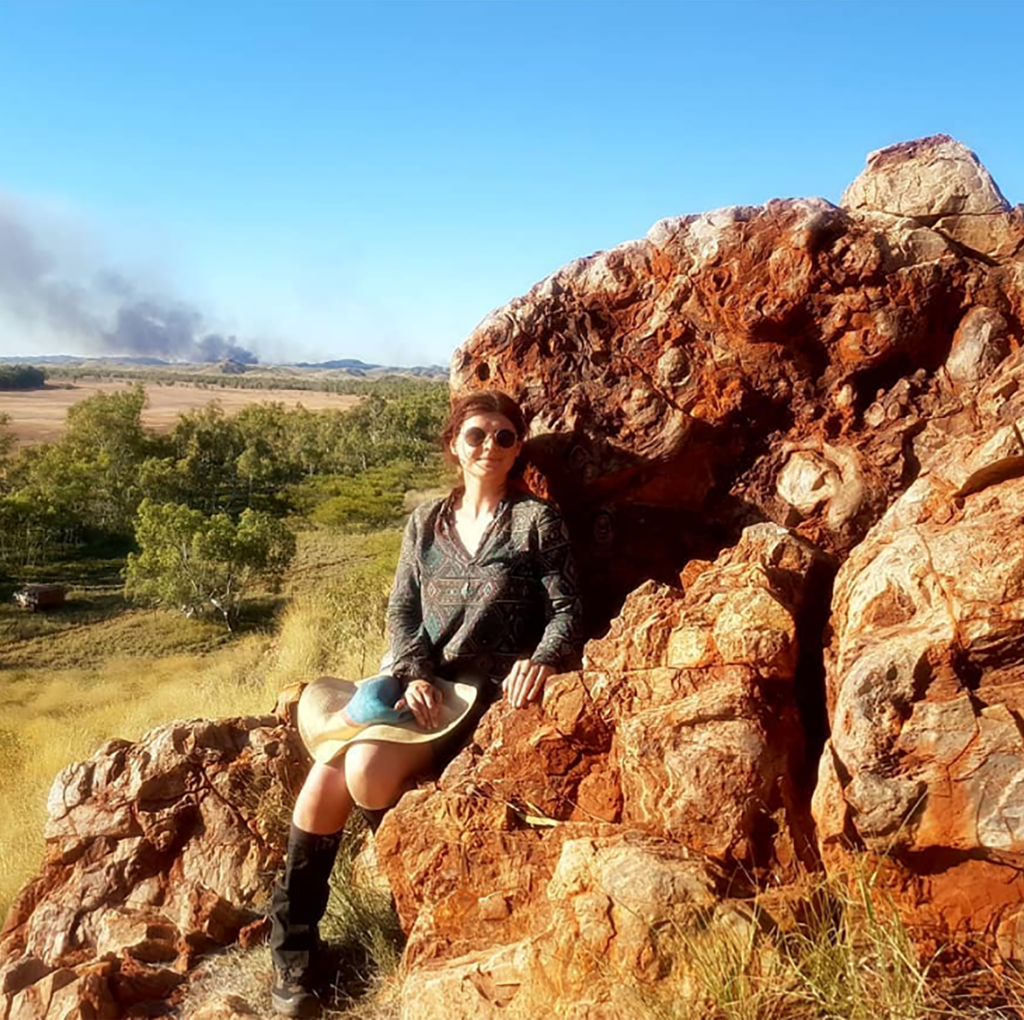
Countdown to Mars
Perseverance will launch between July 30th and August 15th, with a journey time of about seven months. Once she reaches Mars, she will have to land autonomously. There is a time delay for commands at such a far distance. So for a while, she will become Schroedinger’s Rover, both dead and alive.
I’ll be waiting with bated breath until we hear that she has landed safely. I hope you will be too.
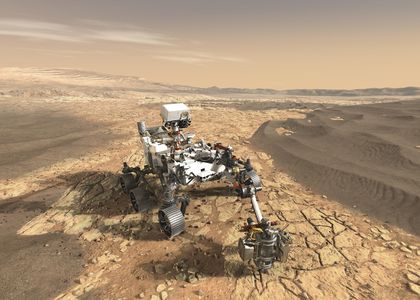


A very interesting post. Than you, Bonnie.